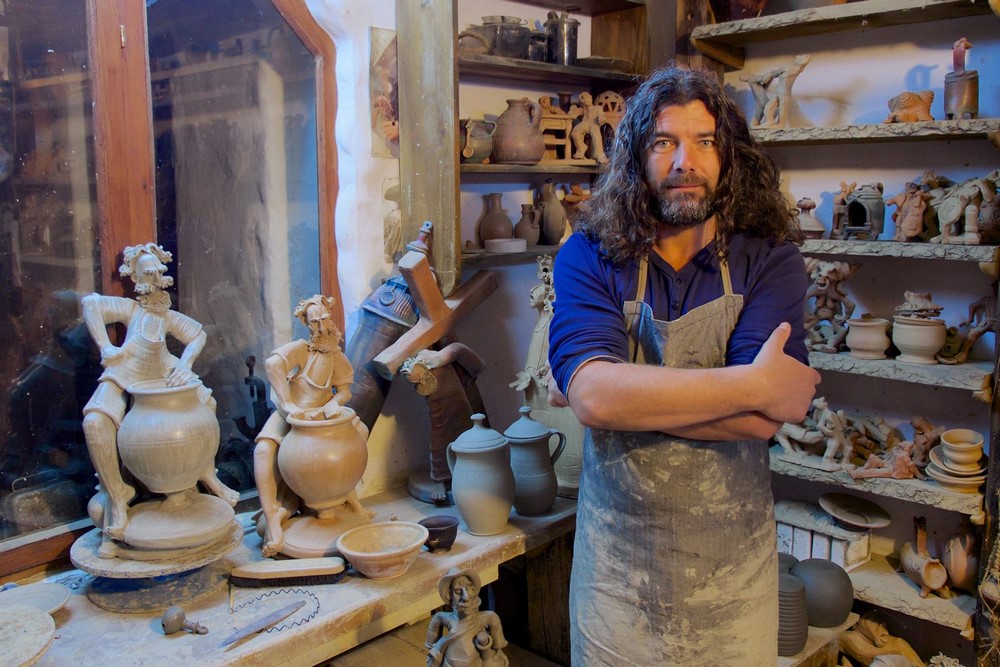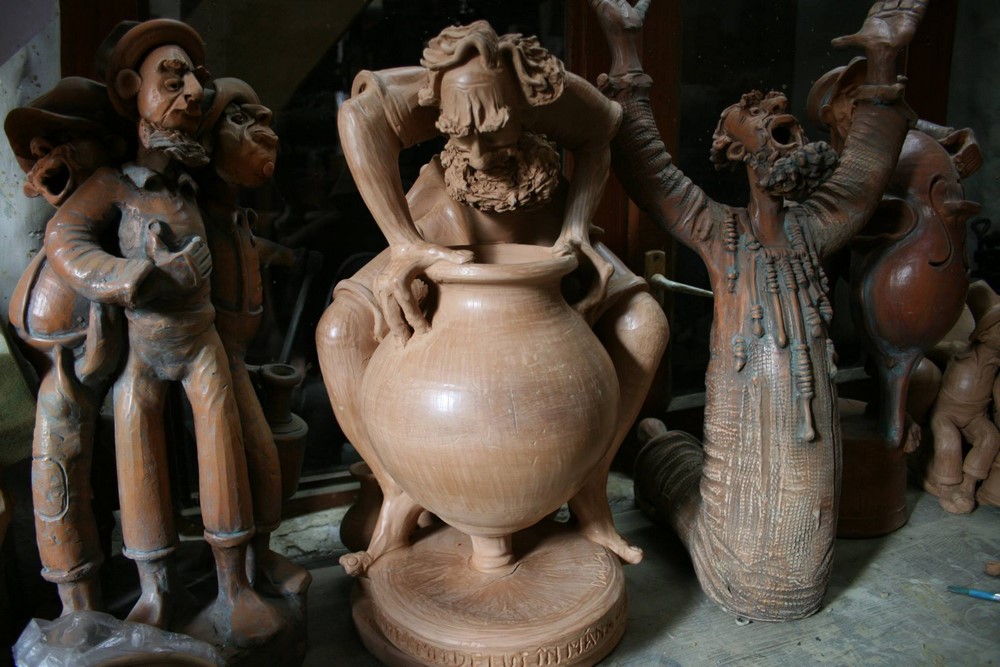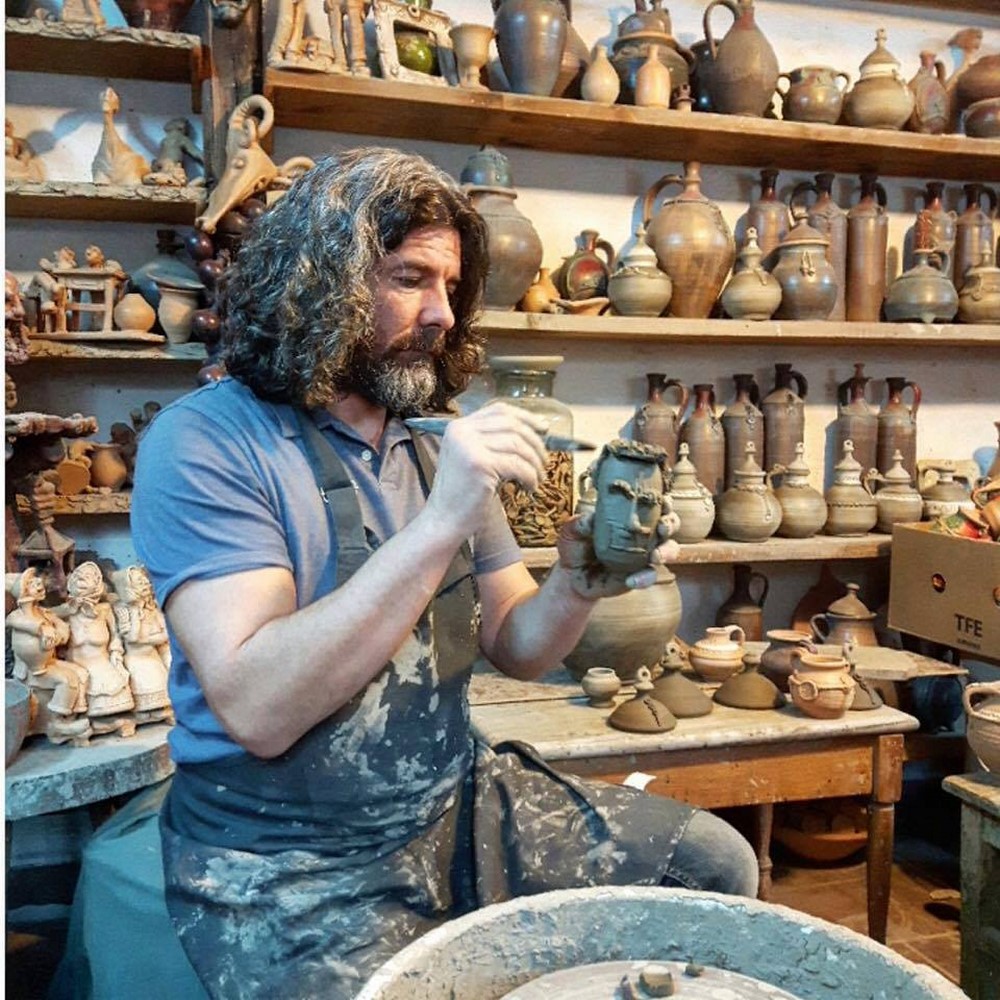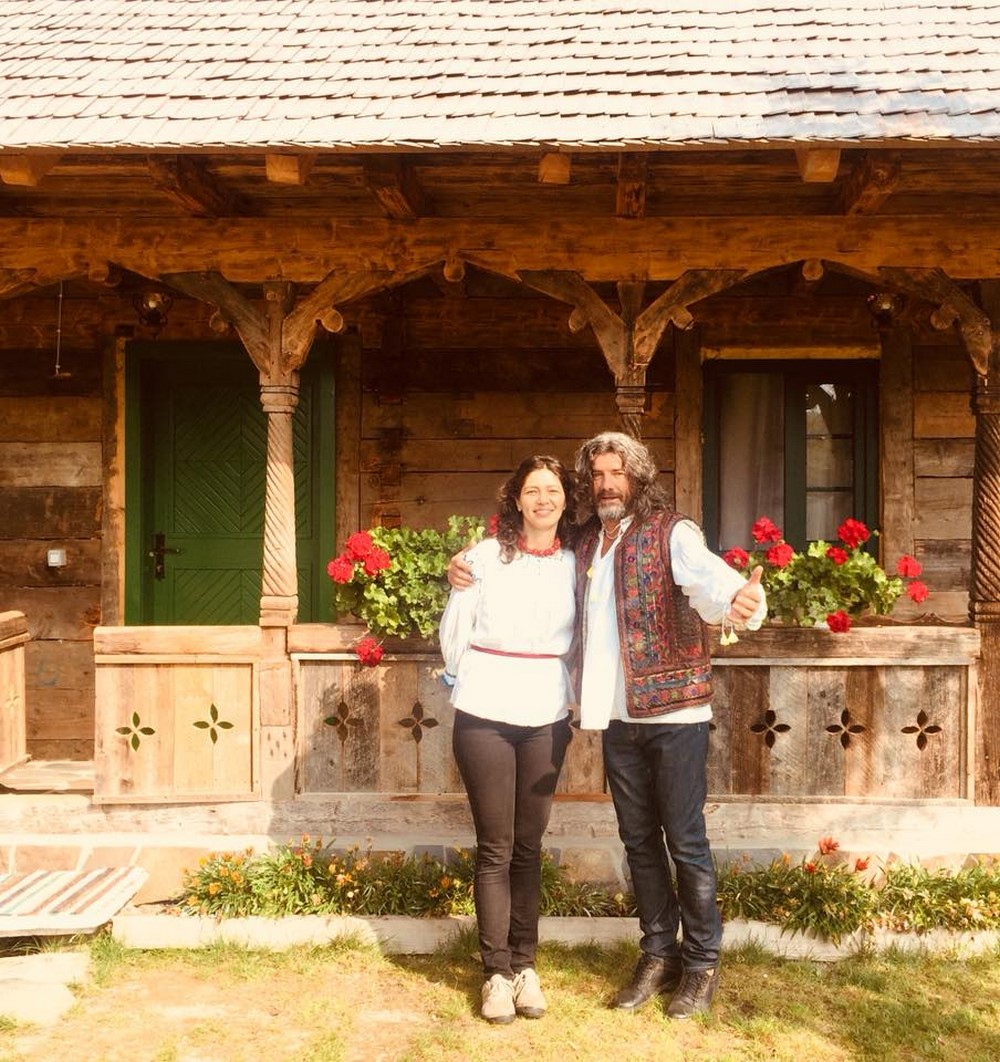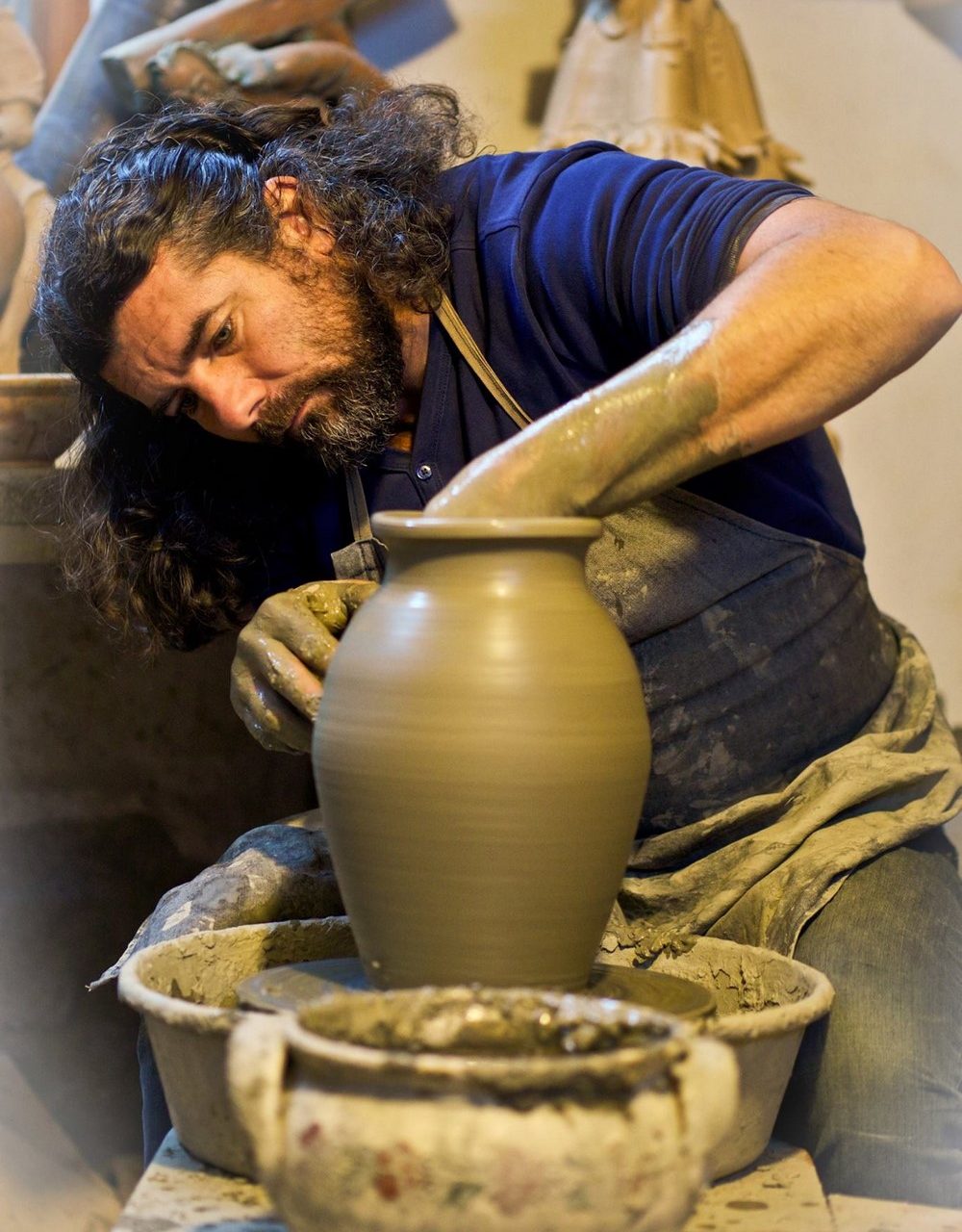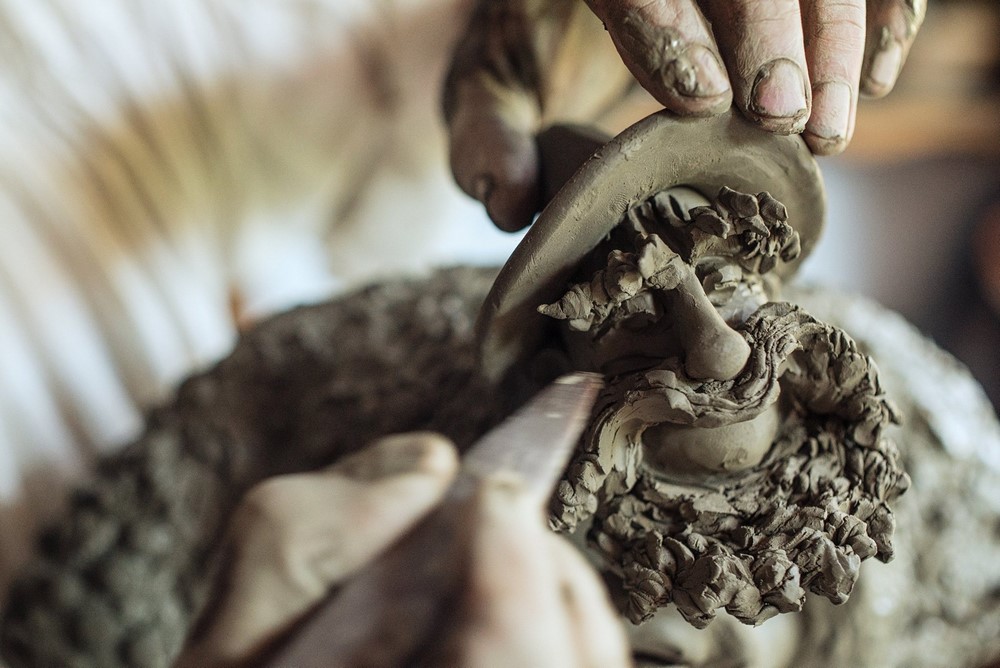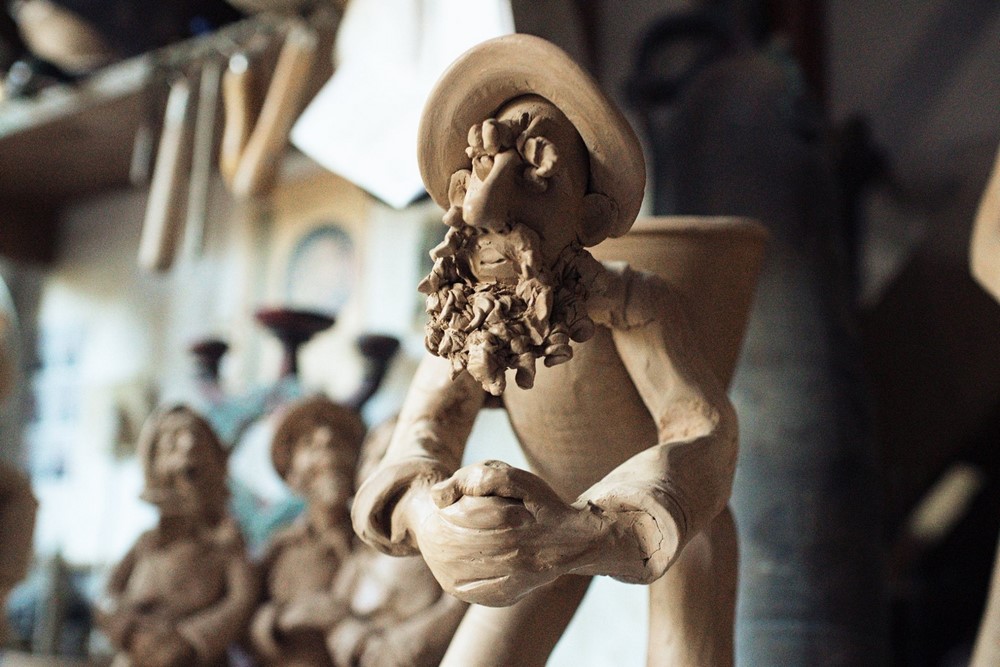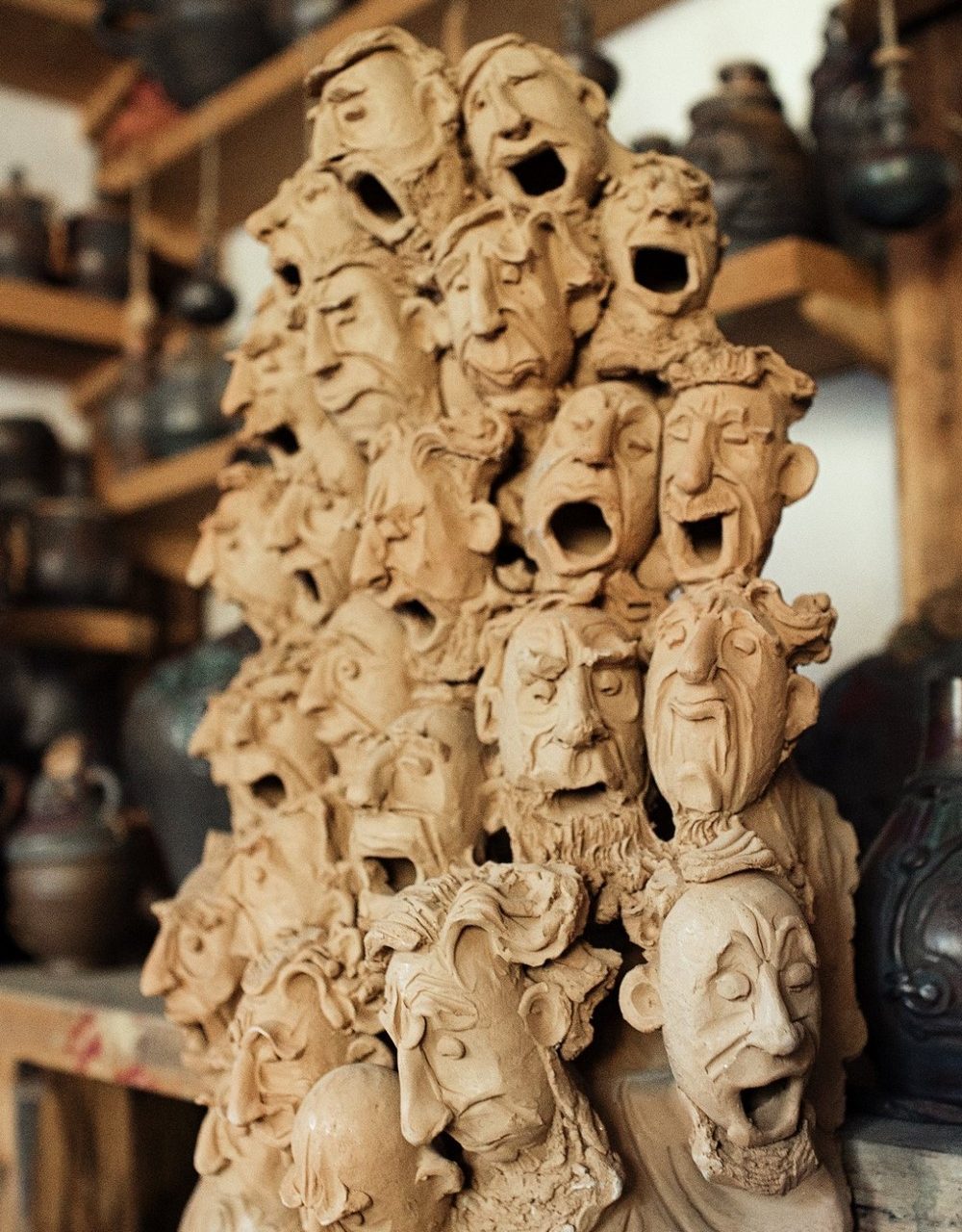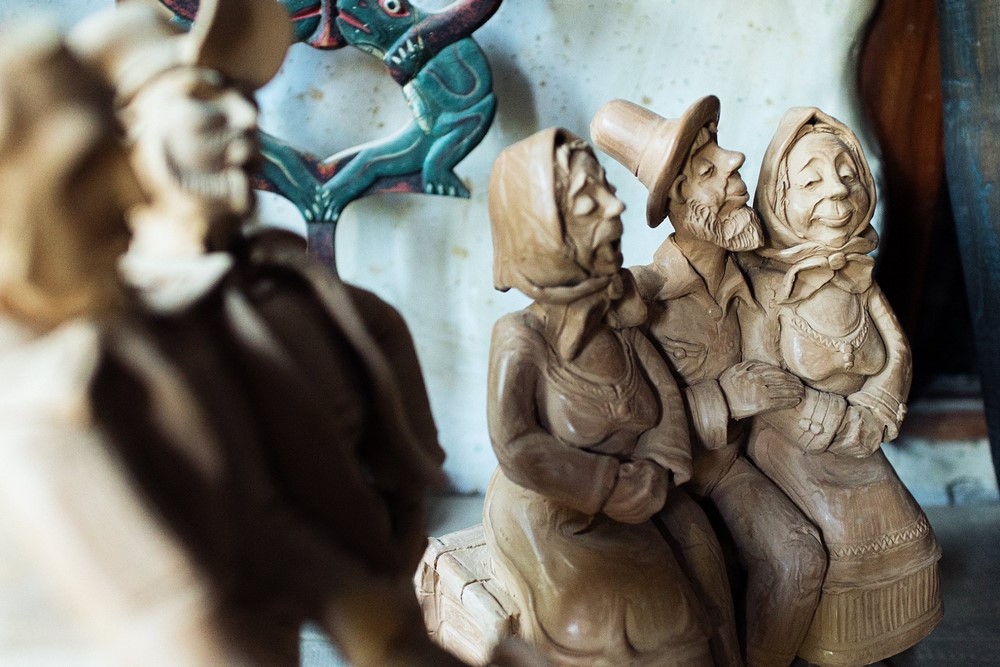Daniel Les is a very skilled potter from Baia Sprie, Maramureș, Romania. He was born in a family of craftsmen, his father being a painter and a potter, who tried to combine painting and pottery into a new form of art. Daniel Les creates figurative pottery which is appreciated both in the country and abroad. Being a pottery lover, he seeks to promote the Dacian processing technique that is 2000 years old. He even made a few replicas of the Dacian vessels from the area, and they turned up to be much appreciated. The first pot entirely made by him around the age of 7, was a plate, but only by the age of 12 he officially became an apprentice. He learned this craft in his father’s workshop, but also in the workshops of other craftsmen of that time.
Daniel also took various specialized courses, but he believes that the old apprenticeship “as it used to be is more important.” “All the guilds knew how to educate their disciples so that they could really learn this craft”. He often teaches people pottery classes and his workshop is located in Baia Sprie, Maramures, Romania. He also owns a chic guesthouse which is located near the workshop and a few beautiful old houses which were restored to become cozy places for accommodation. Tourists can admire his works and even buy ceramic objects from the showroom of his workshop. Those interested in seeing him at work can attend pottery demonstrations. Guiding and translation services can also be provided for foreigners.
🥰 If you are wondering where the clay comes from, Daniel explains that it is the clay that can be used for pottery is found at depths of 2-3 meters. The craftsman tests it to see if it is good enough. A two year kneading period follows. Then it is trampled underfoot, passed through rollers and placed well wrapped in a cool place. It is sprayed with water and the longer it stays, the more suitable it is to work it. Only when the clay is ready for use, Daniel can shape the vessel on the potter’s wheel. The vessel is then dried and polished before being placed inside the kiln where the temperature rises up to 1000-1200 degrees Celsius. He uses natural pigments, local plants, various oxides, and at the end he applies a layer of beeswax on the pots.
Daniel Leș
Share:
Daniel Leș
Contacts:
- Address: Luncii Street, no.1, Baia Sprie, Maramures
- Phone: +40729047429
- E-mail: danna_less@yahoo.com
- Website: https://www.casaolarului.ro/EN/
- Facebook: https://www.facebook.com/Casa-Olarului-Les-Daniel-206542826025459

